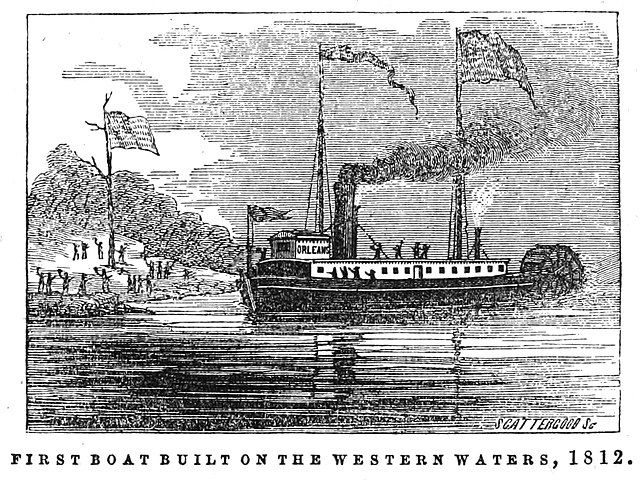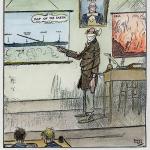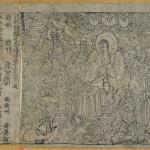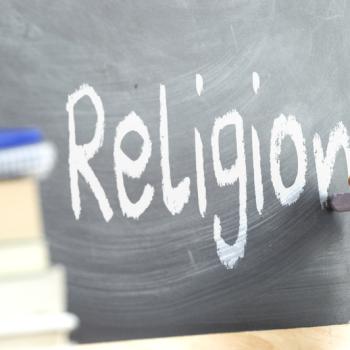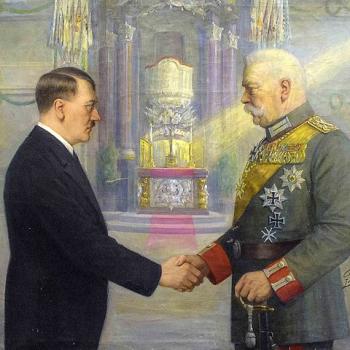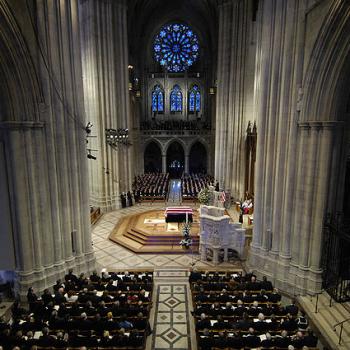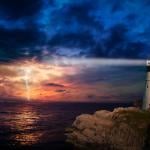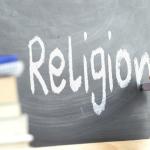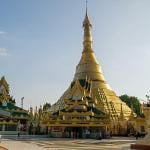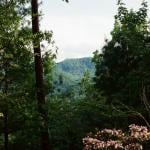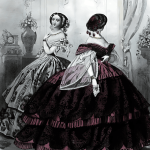What is the connection between natural disasters and religion? The world’s scriptures often mention natural disasters — the biblical flood, for example. But the relation of natural disasters and religion in history is varied and complex. There is data showing that people who live in regions with a high risk of natural disasters exhibit more religiosity than people who don’t. Sometimes disasters are viewed as God’s judgment. Sometimes they are signs of some prophesized event. Here we’re going to look at a natural disaster on the American frontier and how settlers and indigenous people responded.
Frontier Earthquakes
From December 1811 through February 1812 central North America was rocked by a three massive earthquakes, called the New Madrid Earthquakes after a settlement close to the epicenters. The epicenter for the first quake was in what is now northeast Arkansas, but the last was in southeast Missouri. The tremors were felt strongly over an area of 50,000 square miles (130,000 km) and moderately over a million square miles. The Arkansas earthquake rang church bells in Boston and cracked sidewalks in the District of Columbia. The Mississippi River shifted in its bed and was observed to flow backward. A 15,000-acre lake formed in Kentucky that had not been there before.
At the time, this was the western frontier. John James Audubon, the famous painter of birds, was riding through a Kentucky wilderness when his horse stopped, planted its hooves, and would not move. Then trees and bushes began to sway, and the “ground rose and fell in successive furrows like the ruffled waters of a lake,” Audubon wrote. The pioneer Davy Crockett complained that the quakes had “torn to pieces” his hunting grounds. There are no estimates of lives lost or property damaged, but eyewitnesses described houses and log cabins tossed into the Mississippi. Flatboats carrying merchandise to New Orleans were lost “with all hands.” How many hands was not recorded.
Along with the three major quakes, there were thousands of smaller shocks, so that it may have seemed that the earth rarely stopped moving for weeks. By coincidence the New Orleans, the first steam-powered riverboat on the Mississippi, was making its maiden voyage at the time, and the crew provided gut-wrenching details of the devastation. They described the great river clogged with uprooted trees, dead livestock, and deserted boats. Landmarks had disappeared, and settlements had become ghost towns. Even as the riverboat made its way to New Orleans, the shocks continued, causing islands to appear and disappear and the banks to shift as they watched.
Earthquake Christians
One of the after effects of the New Madrid Earthquakes was a dramatic increase in the number of frontier churches. A 19th century historian wrote, “Preachers were everywhere implored to preach and to pray for the people; there was a great awakening among the inhabitants, while men’s hearts failed them, and their knees smote together with fear.” That the Great Comet of 1811 was visible in the sky at the time no doubt added to their fervor. Records show frontier congregations tripling their memberships after the earthquakes, and new churches sprang up throughout the region.
“Earthquake Christians,” as they came to be called, suddenly sought to get right with God, and membership in the local Methodist and Baptist churches soared. According to historian David W. Fletcher, “Preachers attested significant numbers of baptisms and conversions, since sinners wanted to avoid further outpourings of God’s wrath.” As one minister recalled, “It was a time of great terror for sinners.”
Many settlers would say later than this was the most terrifying event of their lives. Some feared the end of the world was at hand. Others interpreted the many shocks as coming from the Holy Spirit. They could feel the vibrations of the Spirit in their bodies, they said.
Tecumseh Stamps His Foot
Native Americans living in the earthquake zone may have had a harder time of it than the settlers. The quakes also affected their religiosity, but in a different way. Many indigenous religions had messianic elements, or a belief in a savior who would lead the people in their time of greatest need. The sight of the Great Comet had already led many to believe such a leader was at hand, and his name was Tecumseh.
In 1811 the Shawnee leader Tecumseh was putting together a confederacy of tribes to challenge white encroachment on their lands. Accompanied by his brother Tenskwatawa, who has long been regarded as a prophet, Tecumseh originally tried to negotiate with whites. When that failed, he gathered warriors from several tribes to push back.
According to legend, Tecumseh converted a community of Creeks to his cause by predicting the earthquake. “You do not believe the Great Spirit has sent me. You shall know. I leave Tuckhabatchee directly, and shall go straight to Detroit. When I arrive there, I will stamp on the ground with my foot and shake down every house in Tuckhabatchee,” he said. When the first quakes destroyed the Creek community, the people knew that Tecumseh had reached Detroit. And the men took up arms and prepared to join Tecumseh. Tecumseh’s death in battle in 1813 ended his confederacy, but he became a folk hero to both indigenous Americans and settlers
Disaster in the Age of Science
In 1811 people had no idea what caused earthquakes. Now we know the New Madrid Earthquakes were caused by a huge fault. People living in the New Madrid Seismic Zone today are used to the occasional tremor. Everyone hopes that A Big One doesn’t happen again. The larger point, though, is that natural disasters today don’t seem to evoke quite the same religious response. Although even today one can always find the television preacher who will claim a hurricane or flood or tornado was God’s wrath over some sin. Or, in Asia, disasters are blamed on karma.
